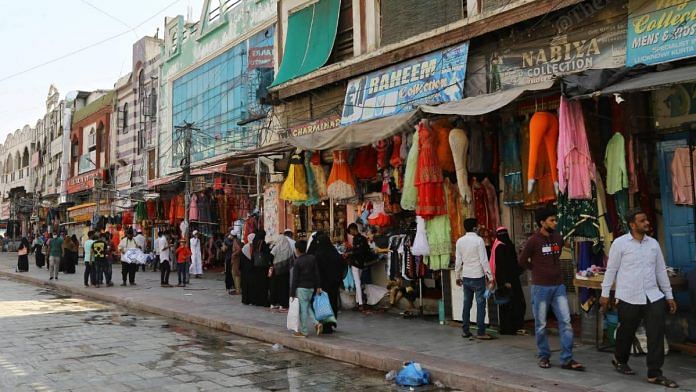New Delhi: Micro small and medium enterprises (MSME), which were badly affected by the Covid outbreak and the subsequent nationwide lockdown, are slowly regaining their footing with only 9 per cent of the units closed as of 1 August instead of the 13 per cent in June and July, a survey has found.
The survey of 5,774 units was conducted by the National Small Industries Corporation, an agency under the MSME ministry, between 9 and 14 August to assess the impact of the pandemic on these units.
According to its findings, liquidity remained a major problem despite measures taken by the government, such as the Rs 3 lakh crore government guaranteed loans to these firms. The other big issues were lack of fresh orders, logistics problems and availability of raw material and labour, the survey found.
Despite the easing of the nationwide lockdown, intermittent lockdown by states has adversely impacted the restarting of many manufacturing units by firms.
The good news is that capacity utilisation has also slowly started improving for these units with one-fourth of them utilising more than 50 per cent of their installed capacity as against one-fifth of the units utilising more than half of their capacity in July.
Capacity utilisation is a measure of actual production as against the installed manufacturing capacity of a unit.
The survey was presented by the MSME ministry before the parliamentary standing committee on home affairs Thursday. The committee, headed by senior Congress leader Anand Sharma, was reviewing the impact of Covid-19 on different sectors, including MSME.
“The MSME sector has been hit hard but now many of them are opening up. Many of the MPs raised the issue of how the micro enterprises are the worst affected as they don’t have access to low cost institutional finance,” one of the MPs who attended the meeting told ThePrint on the condition of anonymity.
The MPs expressed the hope that the government will extend the various schemes targeting the sector beyond 31 August.
According to the 73rd round of the National Sample Survey, conducted during 2015-16, there are 6.33 crore MSMEs in India, generating employment for 11 crore people.
Of this, 99.47 per cent are micro enterprises followed by small enterprises at 0.52 per cent and medium enterprises at 0.01 per cent.
Also read: CHAMPIONS can ease MSME pain only if it effectively helps implement govt’s relief measures
Tourism, apparel, auto sectors worst hit
The MSME ministry quoted an analysis done by PricewaterhouseCoopers (PwC) and said that the industrial belts in Gujarat, Haryana, Tamil Nadu, Rajasthan, West Bengal, Uttar Pradesh, Karnataka and Maharashtra are among the worst affected. Gujarat, the report said, has the highest ratio of total industrial output to Covid-19 incidents.
Overall, 72 per cent of India’s total industrial output coincides with 59 per cent of incidents of Covid-19 by state.
The ministry also highlighted that sectors like tourism, apparel, automotive manufacturers and gems and jewellery have been hit badly with recovery expected to take around 18 months.
How govt is helping
The government announced a Rs 3 lakh crore emergency credit line guarantee scheme for those units that were healthy prior to the pandemic. Banks have together sanctioned Rs 1.5 lakh crore of these fully guaranteed loans as of 18 August, and disbursed Rs 1.02 lakh crore.
Earlier this month, the government had expanded the ambit of this scheme to cover relatively larger MSMEs as well as professionals like doctors.
Besides this, the government also announced a Rs 20,000 crore funding scheme for stressed firms or firms that were non-performing assets even prior to the pandemic.
This scheme was rolled out earlier this month by state-run banks.
The government had also announced setting up a fund of funds that will enable an equity infusion of Rs 50,000 crore in these MSMEs.
Besides these schemes, the Reserve Bank of India allowed a one-time restructuring of loans to enable firms to defer their loan repayment until cash flows resumed.
Also read: Four steps Modi govt must take to revive India’s MSME sector post-lockdown






